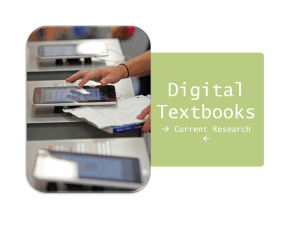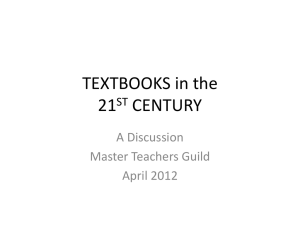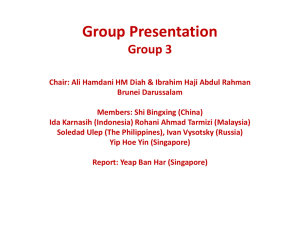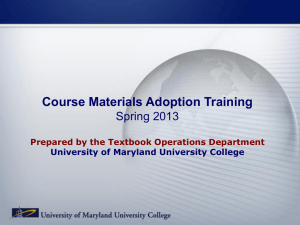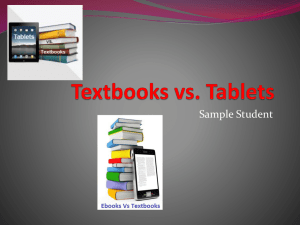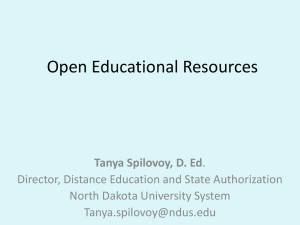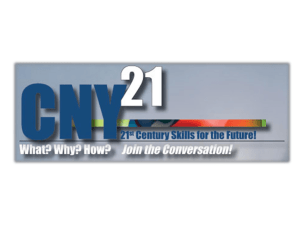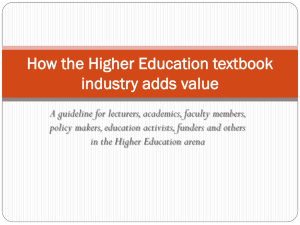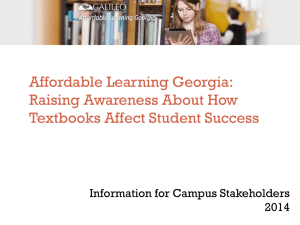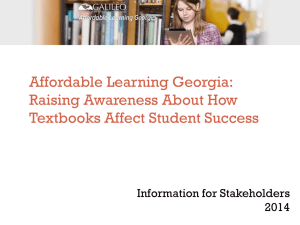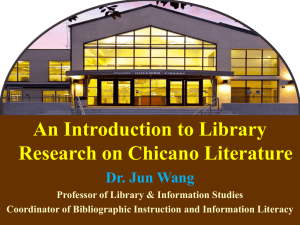an open textbook system to tackle hong kong`s textbook
advertisement
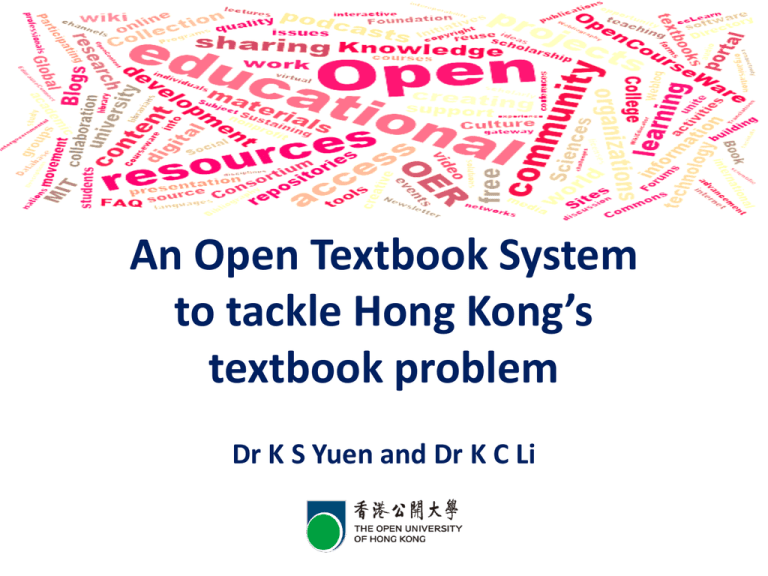
An Open Textbook System to tackle Hong Kong’s textbook problem Dr K S Yuen and Dr K C Li Outgrowths of OER OER Universities Open Textbooks Hong Kong’s textbooks problem The government’s solutions Our proposed solution An online open textbook platform Online textbooks and teaching materials Quality assurance Community and capacity building Outgrowths 1. Online courses based on open courseware: Coursera; Udacity: MITx, edX, OERu 2. Open textbooks projects: College Open Textbooks; Connexions; California Free Digital Textbooks Initiative; Open Access Textbooks; Flat World Knowledge Problems of Textbooks in Hong Kong Problems of printed textbooks There was a heated debate about textbooks in Hong Kong in the past months. The focus was on the high price. Problems of printed textbooks Is it all about money? Problems of printed textbooks Not flexible for specific needs Vetting process too rigid: meeting deadlines Heavy upfront investment; specialized development teams; lengthy production Teachers developing own materials are lone rangers Publishers do not wish to go online Problems of printed textbooks The government’s solution In 2008, a Working Group on Textbooks and eLearning Resources was set up to work on possible solutions. The government’s solution 2009 solution: Grants to encourage schools and publishers to develop e-learning resources; HKEdCity to set up an e-commerce platform to sell e-learning resources Push for debundling of textbooks and teaching and learning materials The government’s solution Result: More e-learning resources are used in classrooms, but they do not replace the textbooks; Textbook prices still on the rise in 2010-11; Resistance by publishers on debundling of textbooks and teaching and learning materials. The government’s solution A Task Force to review learning and teaching materials was formed in early 2011. A report was produced in December 2011. The government’s solution 2012 solution: e-Textbook Market Development Scheme (EMADS) which facilitates, through subsidy, the development of a new, healthy, rich and sustainable e-textbook market. The government’s solution Can EMADS solve Hong Kong problems? We have to wait and see. Debundling does not lead to drop in textbook prices EMADS’s view of e-textbooks is more on the enhanced e-book versions. It does not place emphasis on the printed versions. The government’s solution E-textbooks will take a long time to replace the printed books. Infrastructure and individual equipment have to be in place for extensive use of e-books. Inexpensive e-textbooks cannot be guaranteed when government subsidy is withdrawn. Our proposal An open textbook system Based on the concept and practice of open textbooks The aim is to produce open source textbooks which are free, flexible, and current, for use by schools and universities An open textbook system The textbooks provided: are less expensive allow fast revision and updates allow transparent peer and user quality assurance allow easy adaptation and modification An open textbook system The textbooks provided: are digitized for online and mobile learning Available for use along with multimedia and online materials An open textbook system An online open textbook platform Online (printable) textbooks and teaching materials Quality assurance Community and capacity building An open textbook platform A repository for hosting textbooks and associated learning resources Users can browse, download, revise, remix, re-create and upload materials Users can download and print the (customized textbooks) Open textbooks and teaching materials 12 open textbooks on English language in accordance to EDB syllabuses at the school level Over 100 university level open textbooks Course materials for the new Yijin programme OUHK courseware Modus operandi Selecting existing open textbooks from the Internet, and modifying them to suit Hong Kong needs Enlisting the support of practitioners Employing professionals and experts Joint development with others Quality assurance: internal A team of editors and educational technologists to monitor the development process Subject experts to review items Quality assurance: external Peer review Vetting by Review Panels of EDB Open review and rating by users: teachers, parents and students Systematic evaluation and research Community and capacity building A consortium made up of beneficiary educational institutions to monitor development Contributors and users form a community to share experience Individuals will be invited to join the team of contributors Conclusion In the long run, the project will become a public platform, for enthusiasts to contribute freely, and for use by teachers and students. The expanding community and capacity thus generated will determine the project’s future quality standards and requirements, and in turn will lead to the continuous maintenance and improvement of the contents.
